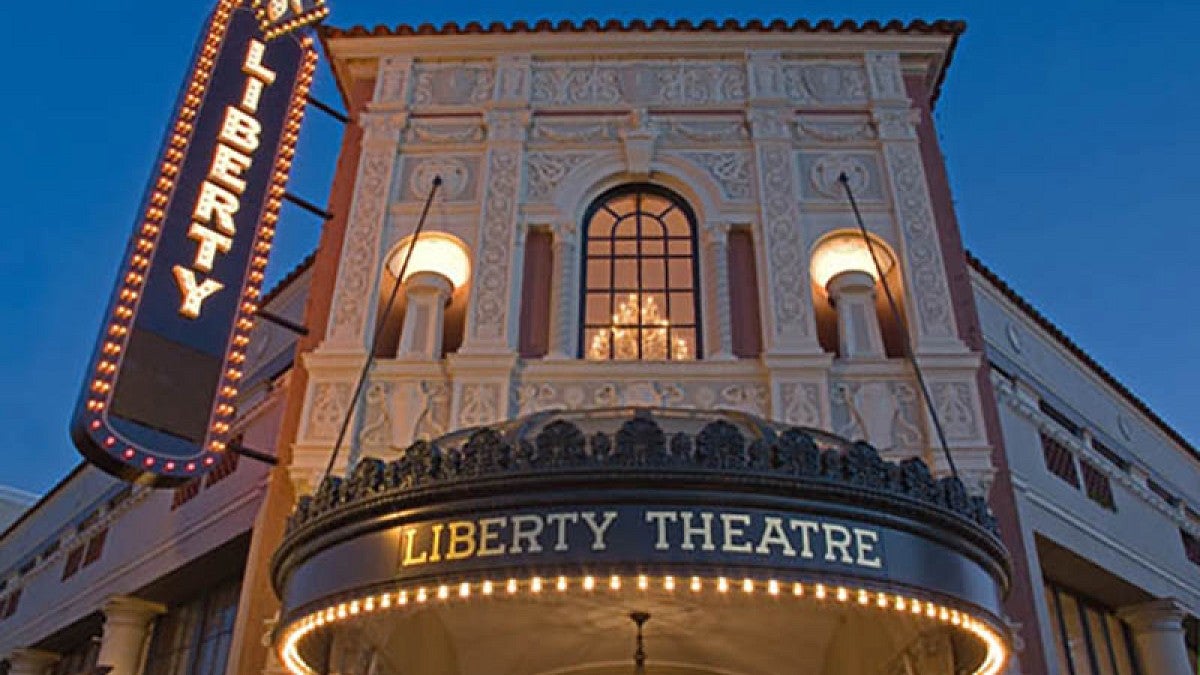On a deep dive into a little-explored corner of Oregon’s past, UO senior Shelby Platt found that a woman who played an important role in early 20th century movie theaters had lost her identity in historical records.
Platt was enrolled in Cinema Studies 335: Exhibition and Audiences, a new course that empowers students to create a historical sketch of Oregon film culture using digital research tools. As she dug into archives, she kept encountering references to this woman and her work, but never by name.

“In every newspaper article I read and even in an industry publication featuring an entire piece on her work, she was always ‘Mrs. George Hunt.’”
Platt didn’t want to let this be the woman’s legacy, so she went into “Nancy Drew mode” and burrowed deeper into digital archives and ancestry databases to search for clues.
“After a lot of digging, I finally found her name: Enid Maude,” she said. “This accomplished woman deserved to be recognized, so it was exciting to uncover her name and share it.”
Platt’s quest was one of many scavenger hunts that students conducted to create new knowledge about the history of movie theaters in Oregon's towns and cities — and to uncover insights on the intersection of film history and the social, political and cultural underpinnings of each region.
The class, which was co-taught by cinema studies department head and professor Mike Aronson and UO humanities librarian and curator of moving images Elizabeth Peterson, showed students how to leverage digital tools to perform original research in the humanities. The pair received a digital humanities curriculum development grant to design and teach the course this spring.
For their final project, students published their findings on the Oregon Theater Project, an online resource the class created to detail the history of movie-going and movie theaters in Oregon from the turn of the century through the silent film era. Aronson believes the platform can contribute valuable new information to film scholarship.
“Very little research exists about movie-going in Oregon,” Aronson said. “However there is abundant evidence of a robust film culture in towns large and small from Salem and Pendleton to Cottage Grove. The students traced and recovered this history through newspapers, city and county directories, local historical societies, and motion picture trade publications, many of which have been recently digitized to allow for this kind of historical research.”

For each city, students conducted a comprehensive examination of how its citizens consumed cinema and how that movie-going intersected with social, cultural, political and historical dynamics. To better understand how these elements shape arts and culture, they dug into demographic data, key events, societal trends, economic and industrial forces and notable political discourse and turmoil, including the presence of the Ku Klux Klan during that time. Aronson and Peterson incorporated lessons on how issues of race and racism were evident in the exhibition and consumption of cinema.
“Prior to this course, I was absolutely unaware of how much you can learn about a town and state’s history just through learning about theaters,” said Jess Thompson, a first-year student studying physics.
Each case study also profiled and mapped all of the movie theaters in those cities and towns, and included information on programming, promotional strategies, ownership and architectural details. The students incorporated photographs, advertisements, newspaper clippings, reviews and architectural images into the project.
To perform the research, students received in-depth lessons on how to use digital research tools and consult city directories, newspapers, industry and trade publications, Sanborn fire insurance maps, and local histories.
“Usually, we get one session with students to give them an overview of how to use library resources,” Peterson said. “This course allowed us to do a deep dive with how to utilize digital tools to enhance our examination of the humanities.”
Students were given a template to follow for their case studies, but it was up to them to make observations and apply critical thinking skills to the project and formulate new insights about the history of movie-going in Oregon. As questions surfaced in their research, they would use their newfound digital research skills and methods to investigate.
One student wondered why a particular movie theater in Salem was so popular and soon found the answer in a newspaper article about the arrest of its owner: The theater had been doubling as a speakeasy. Another student was curious about how ticket prices in 1925 would compare to contemporary rates, so he converted the monetary value and found them to be very comparable, so he surmised that people revered films in 1925, much as they do today.
“It was like a puzzle without the edge pieces or final picture to guide you,” Platt said. “We had to find each piece and figure out how they fit together to tell a story about the history of movies and the citizens of each city and town.”
“One of our primary goals for this course was to teach students how to leverage the potential of digital tools to access and present information that allows for new connections and meanings to emerge,” Aronson said.
As students were getting ready to present their findings in the Price Science Commons Visualization Lab last week, Peterson pulled up a map dotted with 114 theaters that marked movie theaters that the students documented over the course of the term.
“There are stories in all of this data,” she said. “And it is data that we didn’t have before this class.”
—By Emily Halnon, University Communications


